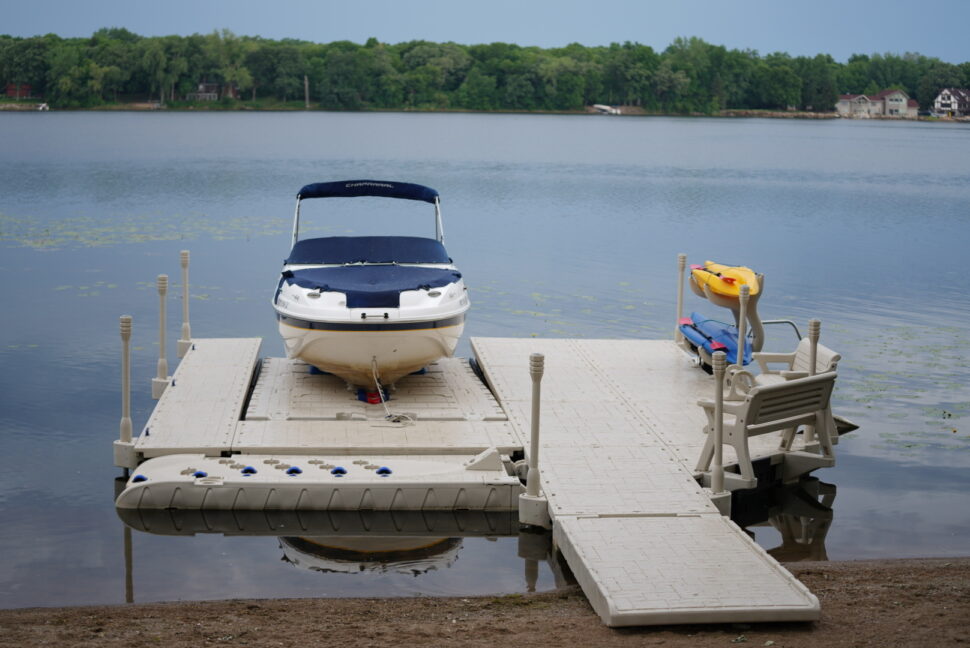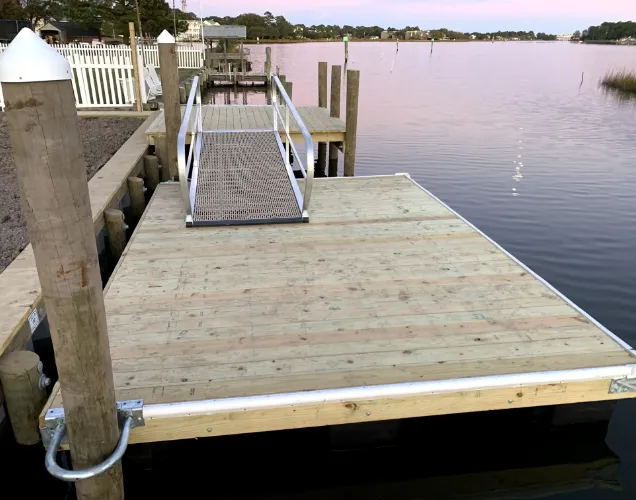Discover the Series Of Floating Dock Providers Designed to Suit Every Seafarer's Requirements
Discover the Series Of Floating Dock Providers Designed to Suit Every Seafarer's Requirements
Blog Article
Upgrade Your Beachfront With Sturdy Floating Docks
Upgrading your beachfront with long lasting floating docks can significantly improve both performance and aesthetic appeals, providing a flexible solution for different water tasks. These structures are designed to adjust to changing water degrees, making sure safety and access throughout the seasons. With a series of materials readily available, including low-maintenance alternatives and conventional timber, choosing the appropriate dock can match your individual style and satisfy practical requirements. However, comprehending the subtleties of installation and upkeep is essential for making sure longevity and performance. What factors should you think about when making this financial investment?
Advantages of Floating Docks
Floating docks offer a wide variety of advantages that improve their charm for numerous maritime applications. Unlike traditional set docks, floating docks rise and fall with the trend, making sure consistent access for boats and boat regardless of ecological conditions.
Additionally, floating docks are much easier to mount and transfer, offering adaptability for seasonal or momentary usage. Their modular style allows for personalization to fit certain demands, whether for personal marinas, property beachfronts, or business applications.
Additionally, floating docks create minimal disturbance to the marine environment, preserving regional ecological communities and decreasing the possibility of disintegration. They also offer enhanced safety and security for individuals, as their resilient nature offers an extra forgiving surface area than inflexible structures.
Moreover, floating docks can assist in a varied series of activities, such as fishing, swimming, and leisure boating, making them an important asset for beachfront development. Their flexibility and usefulness make floating docks a preferred option for a range of marine tasks.
Choosing the Right Materials
Choosing ideal materials for floating docks is essential to their longevity, efficiency, and overall effectiveness. When picking materials, take into consideration variables such as ecological direct exposure, upkeep needs, and architectural stability. Common materials include timber, plastic, light weight aluminum, and composite choices, each offering distinctive advantages and downsides.
Timber, while cosmetically pleasing, calls for regular upkeep to avoid rot and degeneration. Pressure-treated timber can improve resilience, yet it might still yield to water damage gradually. Plastic floats, often made from high-density polyethylene, are resistant to rust and need very little maintenance, making them an appealing selection for low-maintenance applications.
Aluminum is another practical alternative, recognized for its stamina and light-weight residential or commercial properties. It is resistant to rust and can endure severe weather, although it might be a lot more pricey than various other materials. Composite products incorporate the finest characteristics of timber and plastic, providing a low-maintenance and resilient alternative that imitates the look of wood without the associated downsides.
Eventually, the option of product ought to straighten with the intended use, ecological factors to consider, and spending plan restraints, making certain a practical and durable floating dock that fulfills your particular demands.
Setup Refine Introduction
The effective installation of a drifting dock relies upon mindful planning and execution, making sure that it runs efficiently in its desired setting. The very first step entails evaluating website problems, including water depth, shoreline features, and prevailing weather patterns, which will certainly notify the dock layout and anchoring system.
Following the site evaluation, the following stage is to prepare the floating dock elements. This consists of setting up the framework, protecting drifts, and affixing any type of needed equipment. It is vital to guarantee that all connections are water-resistant and robust to endure marine conditions.
Once the dock is constructed, the installment process commences with positioning the dock in the water. This can include a crane or other training devices, particularly for larger frameworks. Correct placement is necessary for capability and security.

Maintenance Tips for Durability
Routine upkeep is vital for ensuring the longevity and ideal efficiency of a drifting dock. To achieve this, begin with routine inspections at the very least two times a year, focusing on the integrity of the dock's framework, consisting of the flotation tools and linking hardware. Try to find indicators of rust, wear, or damage, and deal with any kind of issues immediately to stop additional deterioration.
Cleaning is one more vital aspect of upkeep. Eliminate debris, algae, and barnacles from the dock's surface area to protect against unsafe problems and keep aesthetic appeal. Use a light detergent and a soft brush to avoid damaging the dock's materials.
Additionally, guarantee that the dock is appropriately secured and safeguarded to withstand seasonal adjustments in water levels and weather. Examine the anchoring system for stability and make modifications as essential.
Enhancing Your Exterior Aesthetic
To develop a visually enticing exterior space, including a drifting dock can dramatically boost the general aesthetic of click this site your waterfront home. Floating docks are not just functional yet can also work as a striking prime focus that enhances the natural environments - dock company. Offered in different materials and layouts, these docks can be tailored to match your building's architectural style and landscape
The addition of decorative aspects, such as incorporated lights or trendy railings, additionally boosts the dock's aesthetic appeal. Consider utilizing all-natural wood coatings, which mix flawlessly with the environment, or choosing for modern materials like aluminum or composite decking that offer a smooth, contemporary appearance.
Purposefully positioning planters or seating locations on or around the dock can develop welcoming areas that motivate leisure and enjoyment of waterside sights. In addition, including shades and structures that integrate with your landscape will certainly produce a natural visual throughout your exterior area.

Verdict

Upgrading your waterfront with resilient floating docks can significantly enhance both performance and visual appeals, supplying a functional option for different water activities. Unlike typical set docks, floating docks increase and fall with the trend, guaranteeing regular availability for watercrafts and boat no matter of environmental conditions.Picking proper products for floating docks is essential to their long life, efficiency, and total performance.As soon as the dock is put together, the setup process begins with placing the dock in the water.In summary, floating docks offer various benefits, consisting of flexibility to water level adjustments and a range of material choices.
Report this page